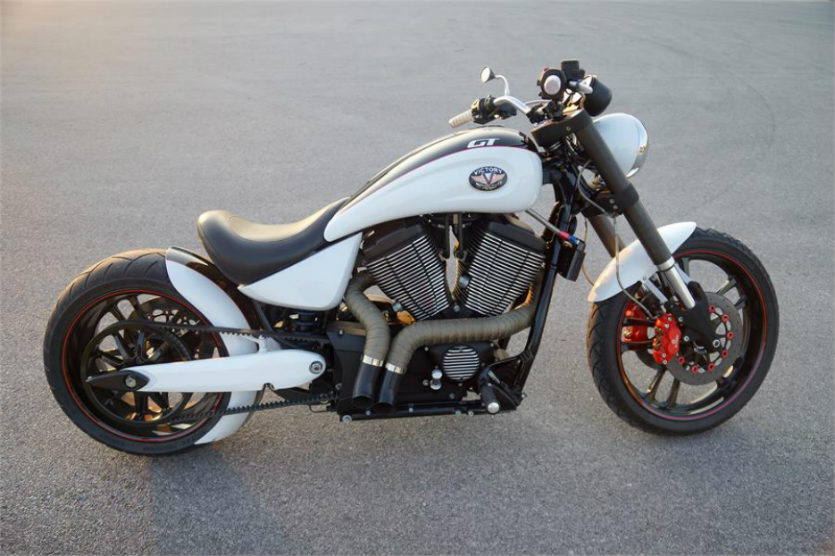
Here’s Why You Should Heat Wrap Your Motorcycle Exhaust
There’s a clear rift in the world of motorcycles, splitting riders between the two types of engines most of them ride (apart from electric ones). You have the air-cooled purists, riding your typical Harley cruiser, and the liquid-cooled gang that worship high redlines and straight-line speed in something like the BMW 1000 RR. Both bikes are worlds apart, but from the perspective of their owners, they’re the best ones to ride.
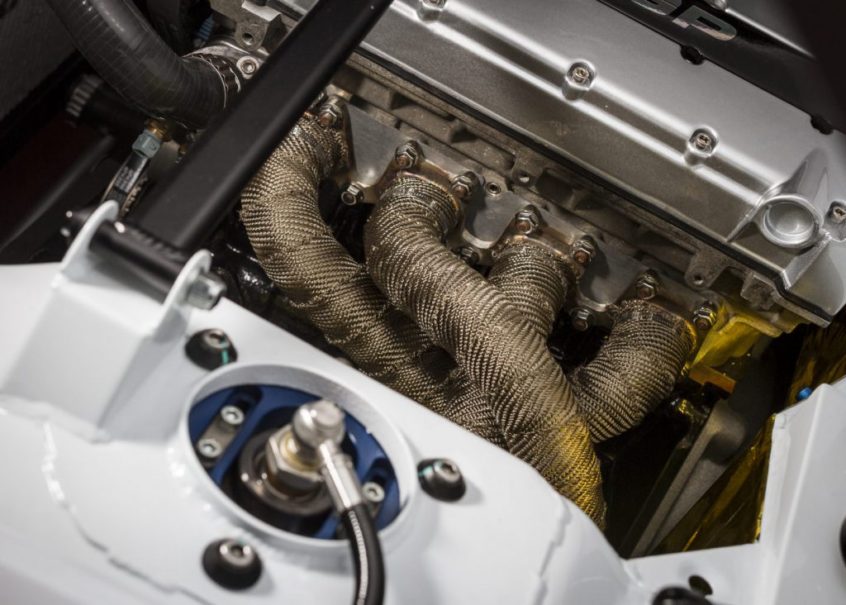
Air-cooled and liquid-cooled bikes manage heat in different ways. Cooling fins dissipate heat in air-cooled bikes, spreading it over a larger surface, whereas circulating coolant moves in a complex network in liquid-cooled bikes to get things within optimal working temperatures. Riding the bikes feels different too. Not just the differences in the type of bike, or the horsepower numbers, but how hot they get. You’ll definitely feel the heat of an air-cooled engine when stuck in traffic on a hot day.
Contents
What is Exhaust Wrap?
Bikers and car enthusiasts use exhaust wrap to manage excessive heat radiating from the cylinders. When used in cars, it shields surrounding engine parts. In motorcycles, especially with air-cooled engines, it also helps achieve tolerable heat levels, something you’ll appreciate if you do more miles in warmer weather. The wrap is applied from the exhaust header exiting each cylinder, all the way down to the collector for the best results.
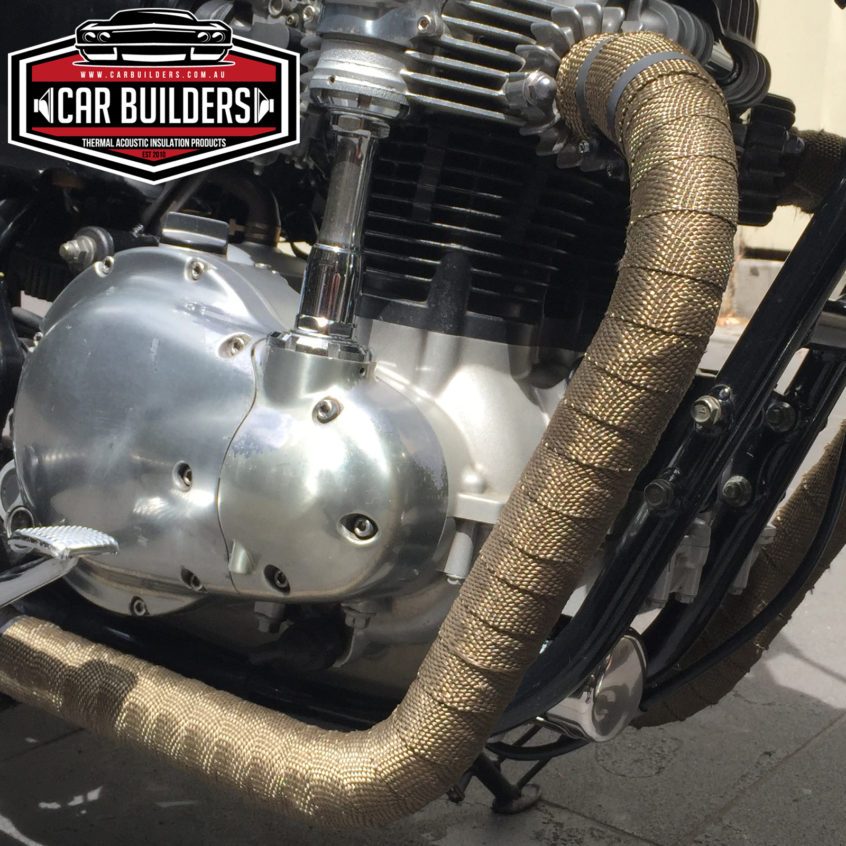
Motorcycle header wrap comes in 3 different types. The cheapest is made of fibreglass, is white-ish in colour and has the lowest temperature rating. Next is exhaust wrap made from ‘pulverised volcanic rock’, usually black, and with decent heat ratings. And then there’s titanium wrap, the one that most riders go for, resembling a gold colour, and able to withstand the most heat, up to 1200°C degrees. There’s not a huge price difference among the three, but almost double the temperature rating between the fibreglass and titanium wrap.
Benefits of Using Motorcycle Header Wrap
Exhaust wrap does three things at the same time – it keeps your engine cool, it keeps you cool, and it looks cool. And all this at a modest price. Let’s delve into a little more detail about how the different kinds of cool work here.
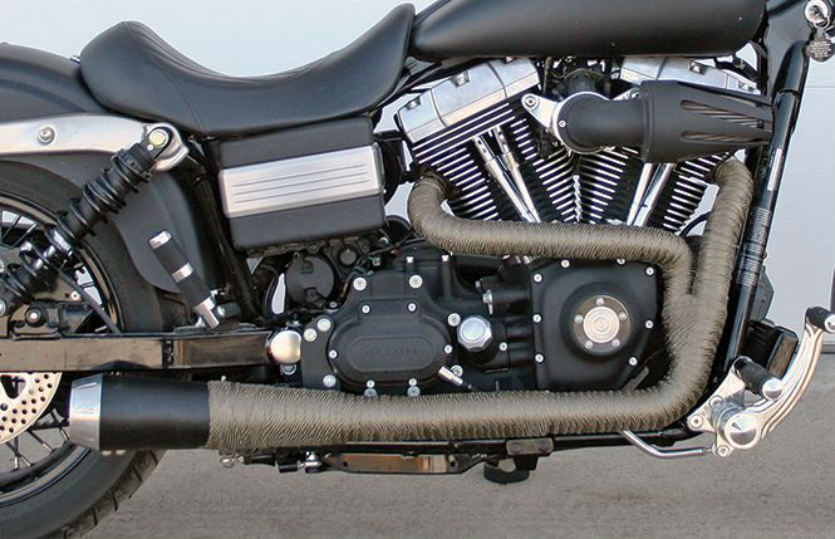
First, it keeps your engine cool by not allowing the combusted gases from making their way back into the cylinder, or something known as backpressure. Motorcycle wrap eases the flow of hot gases through the exhaust pipes, with gases flowing from areas of high pressure, or the cylinder head, to areas of low pressure, or the exhaust. Hotter gases are expelled faster, meaning your engine is ready for new air intake. This essentially bumps up horsepower, and the process of combustion begins again, but at a faster rate.
The insulative properties of motorcycle header wrap means heat is contained within the walls of the exhaust pipes and doesn’t radiate to other engine parts or worse, towards you. The engine won’t overheat even when pushed, and neither will you. This brings me to the second point. There isn’t a rider out there that hasn’t burned calves, jeans or boots from the exhaust. Exhaust wrap insulates the rider from a potentially hotter engine, and from heat radiating from the outer exhaust walls. A win-win situation considering cooler engine parts will last longer, and a cooler rider is more comfortable to take longer rides on.
Then, there’s the look of motorcycle wrap, especially if you’re using gold-coloured titanium wrap on a classic bike style, say a cruiser, tourer or café racer. The neat look will hide any blackened or stained exhaust imperfections on bikes with more kilometres. It will also complement any gold-accented or polished chrome parts, like discs, forks and rear springs. If you want a more subdued and understated look, then use the black lava rock exhaust wrap.
Installing Motorcycle Header Wrap
There are two ways you can go about installing exhaust header wrap on your motorcycle. The first is to completely remove the entire exhaust from the bike, the second is to wrap the exhaust in place. Though neither way is more correct, the first method will give you more space to get a tighter, neater finish.
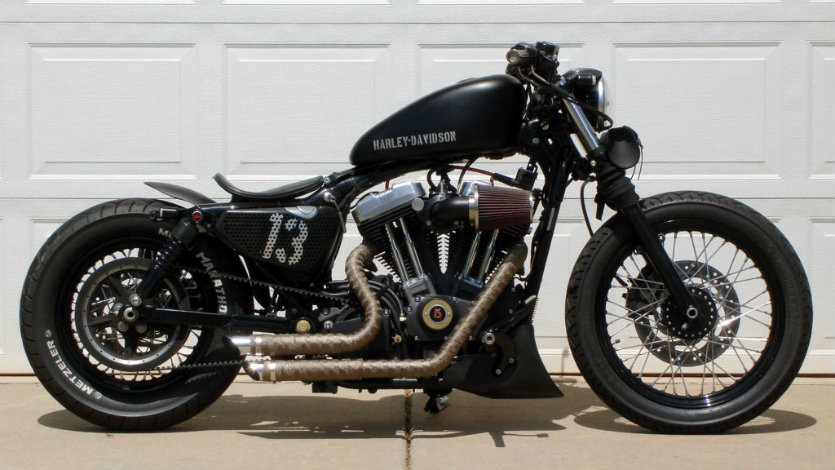
If you’re working with fibreglass wrap, it first needs some water to soften up. Measure the circumference of a piece of tubing, and count how many pieces of wrap you’ll need to cover the part you intend to wrap. Include overlays of roughly half to one centimetre so there aren’t any visible gaps. Then cut the wrap with a pair of scissors at the measured length. Tighten the wrap along the tube, and fold the last bit inwards. Secure the wrap with the provided cable ties using a screwdriver. If there’s excess cable, cut it to a neat fit with a pair of pliers or clippers. If you riding a twin, repeat the process for the other exhaust header. Fitted as it should, the wrap won’t budge.
Final Thoughts
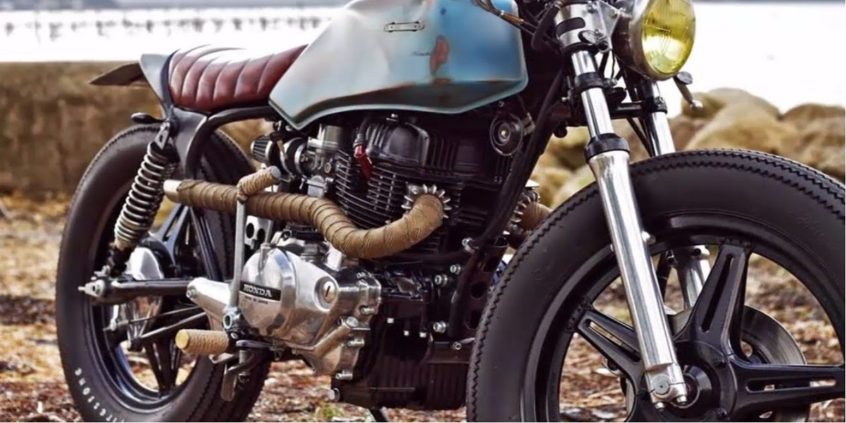
Properly installed wrap should last for years, and many miles. It will keep your exhaust in top condition, as well as keep it dry. It will shield your air-cooled engine from overheating, give you some extra power, and keep everything cool. Oh, and did I mention it looks good? Get motorcycle exhaust header wrap from your nearest engine tuning or bike shop.

